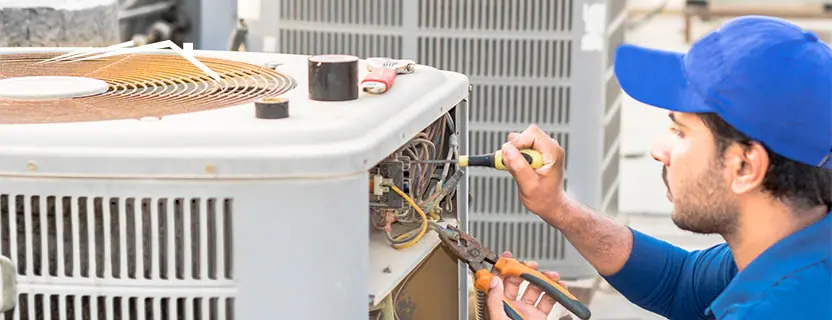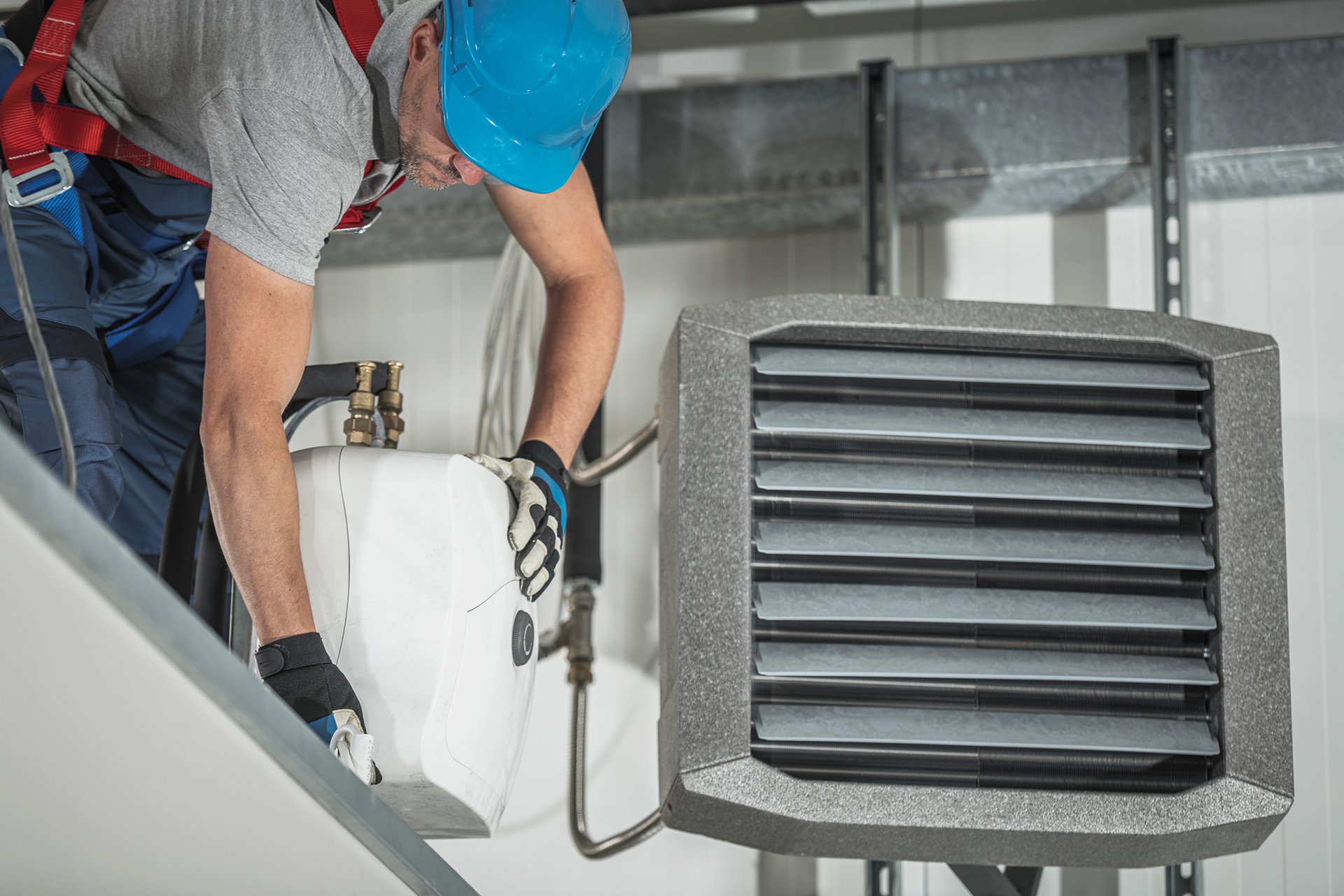Your Ultimate Checklist for Effective heat pump service
Your Ultimate Checklist for Effective heat pump service
Blog Article
How a Heatpump and Furnace Interact to Maximize Your Home's Home heating Efficiency
Understanding how a heatpump and furnace interact is crucial for home owners seeking reliable home heating options. Each system has its strengths, offering a well balanced method to home convenience. The heatpump masters moderate temperatures, while the furnace supplies fast warmth during severe cold. This synergy not just decreases energy prices however additionally enhances the life expectancy of both home appliances. What elements influence this collaboration, and just how can property owners optimize their benefits?
Understanding Warm Pumps: Just How They Work
Lots of people might be unknown with their internal operations, warmth pumps play a crucial duty in contemporary heating systems. These tools run by moving heat from one location to an additional, using the concepts of thermodynamics. In colder months, a heat pump extracts warmth from the outdoors air, ground, or water, and transfers it inside to warm up the living area. Conversely, during warmer months, it can turn around the procedure, functioning as an air conditioner by removing warm from inside to the outside.Heat pumps are composed of an evaporator, development, compressor, and condenser valve. The refrigerant within the system absorbs warmth as it evaporates at low temperature levels and stress. The compressor after that increases the pressure and temperature level of the refrigerant, enabling it to release warm as it condenses. This effective process can substantially reduce energy intake compared to conventional heating methods, making heatpump a sustainable option for climate control in homes.
The Function of Heating Systems in Home Home Heating
Furnaces play an important role in home heating by supplying a trustworthy resource of warmth throughout the chillier months. They operate by generating warmth via burning or electrical resistance, distributing it throughout the home through air ducts or radiant systems. The effectiveness of a heating system is often measured by its Yearly Gas Use Effectiveness (AFUE) rating, which indicates how successfully the device converts gas right into heat.Furnaces can utilize different power sources, including all-natural gas, electricity, oil, or lp, permitting property owners to pick one of the most suitable option for their demands. Unlike heatpump, which may battle in extreme chilly, furnaces keep consistent performance, guaranteeing that interior temperature levels continue to be comfy despite exterior conditions. Additionally, modern-day furnaces usually come outfitted with sophisticated technology, such as variable-speed blowers and wise thermostats, enhancing their effectiveness and responsiveness. This convenience makes heating systems a crucial component in all-inclusive home heating strategies.

Advantages of Utilizing Both Solutions Together
Combining the strengths of both furnaces and warm pumps can cause a much more efficient and efficient home heating remedy. Making use of both systems enables property owners to take advantage of the heat pump's power efficiency throughout milder temperatures while counting on the heater for more extreme cold problems. This double approach can greatly lower power expenses, as heatpump eat less electricity than typical home heating methods when temperature levels are moderate.Additionally, making use of both systems with each other can enhance comfort levels in the home. Warmth pumps can provide consistent, also home heating, while heaters can swiftly raise ambient temperature levels when required. The integration of both systems can expand the life expectancy of devices by decreasing wear and tear on each unit, as they share the work. Inevitably, house owners can delight in a balanced, economical home heating service that readjusts perfectly to differing weather conditions, making certain a warm and welcoming home throughout the winter months.
Exactly How Warmth Pumps and Furnaces Enhance Each Other
When house owners incorporate heatpump and heating systems, they develop a complementary heater that makes the most of efficiency and convenience. Heatpump run by transferring warmth from the outdoors air or ground, making them very reliable in moderate climates. They succeed throughout milder temperatures, offering economical home heating. Conversely, heaters create heat through combustion or electrical resistance, delivering strong, immediate warmth during extreme cold conditions.The mix of these 2 systems permits vibrant modifications based upon temperature variations. During warmer months or milder wintertime days, the heatpump can take the lead, preserving energy and minimizing expenses. As temperatures decline, the heater can effortlessly engage, guaranteeing consistent warmth throughout the home. This harmony not just enhances energy use yet likewise enhances the lifespan of both systems, as each device runs within its optimal performance range. With each other, they produce a balanced setting that adapts to differing environment demands.
Maximizing Effectiveness: Tips for Homeowners
Property owners can boost their home heating efficiency via a number of useful strategies. Developing a normal upkeep routine, incorporating smart thermostat modern technology, and carrying out effective insulation and sealing solutions are vital steps. These measures not just improve convenience but likewise reduce power costs.
Routine Upkeep Arrange
To assure maximum home heating efficiency, establishing a normal upkeep timetable is essential for any kind of home. Home owners must prioritize routine evaluations of both heatpump and heating systems to ascertain peak performance. This includes altering air filters each you can look here to three months, as blocked filters can greatly decrease performance. Additionally, organizing professional upkeep at the very least annually permits service technicians to recognize and deal with prospective concerns prior to they escalate. Home owners should likewise clean up the heatpump's outside unit to avoid debris buildup that can hinder air movement. By adhering to a routine upkeep timetable, home owners not only enhance their heater' effectiveness yet additionally extend their life expectancy, bring about better convenience and lowered power prices throughout the colder months.
Smart Thermostat Integration
Incorporating a wise thermostat into a home heating system can greatly enhance power performance, especially as it permits for exact control over temperature setups. These gadgets can discover the house owner's timetable and choices, immediately readjusting the temperature to maximize convenience while reducing power usage. As an example, they can decrease home heating throughout times when the home is unoccupied, lowering unnecessary usage. Many clever thermostats also give real-time power usage information, allowing property owners Web Site to make informed decisions concerning their heating practices. Additionally, remote accessibility through smart device apps permits users to change settings from anywhere, making sure the home is cozy upon return. Generally, smart thermostat integration not just enhances convenience however significantly adds to power cost savings and efficiency.
Insulation and Sealing Solutions
Smart thermostats play an essential role in energy efficiency, but their efficiency can be substantially improved by proper insulation and securing solutions. Home owners should prioritize shielding attics, walls, and floorings to minimize warm loss. High-grade insulation products, such as spray foam or fiberglass, can significantly enhance thermal resistance. In addition, securing voids around doors, air ducts, and home windows prevents cold air infiltration and heat retreat. Weatherstripping and caulking are reliable methods for addressing these leaks - ductless mini splits. Routine assessments for air leakages, together with the usage of blower door tests, can help identify problem locations. By buying insulation and sealing, house owners can enhance the performance of their heating unit, ultimately resulting in decreased energy intake and lower utility bills
Usual Misconceptions About Heat Pumps and Furnaces
What misunderstandings surround warmth pumps and heating systems? Lots of individuals incorrectly believe that heatpump are ineffective in colder environments. In reality, modern-day warm pumps are created to operate efficiently even in reduced temperature levels, supplying trustworthy heating throughout winter. An additional typical myth is that furnaces are always more reliable than warm pumps. This depends on the details energy resources and performance rankings of the systems in inquiry. Some may additionally believe that utilizing both systems simultaneously is unneeded, but as a matter of fact, this mix can optimize heating performance, especially throughout extreme weather. Furthermore, people frequently think that warmth pumps call for continuous maintenance, when in fact, they have similar maintenance requires to standard home heating systems. By debunking these misconceptions, homeowners can make even more informed decisions regarding their home heating choices, inevitably causing boosted convenience and power performance in their homes.
Upkeep Considerations for Combined Solutions

Often Asked Questions
Can Warm Pumps Job Successfully in Extremely Cold Climates?
Warm pumps can battle in very cool environments due to decreased efficiency and heat extraction limitations. Advancements in innovation have led to models designed for better efficiency in such problems, enhancing their practicality in extreme environments.
For How Long Do Heat Pumps and Furnaces Usually Last?
Heatpump normally last 15 to twenty years, while furnaces have a lifespan of 15 to 30 years. Normal upkeep can extend their long life, ensuring effective operation and decreasing the need for early substitutes.

What Is the Average Cost of Installing Both Solutions?
The average expense of installing both a heatpump and a heater commonly ranges in between $5,000 to $10,000 - heat pump installation ooltewah tn. Variables influencing this expense include system dimension, installment intricacy, and local labor rates
Exist Tax Incentives for Utilizing Energy-Efficient Home Heating Systems?
Many homeowners ask regarding tax rewards for energy-efficient furnace. Numerous government and state programs often supply credits or refunds, urging the fostering of sustainable innovations to decrease energy intake and promote ecological obligation.
Just how Do I Pick the Right Size Heatpump and Furnace?
Selecting the best dimension warm pump and furnace includes calculating the home's square video footage, thinking about insulation high quality, and evaluating local environment. Consulting an expert can assure excellent system performance and power effectiveness based upon details demands. heat pump installation ooltewah tn. Understanding exactly how a heat pump and furnace work together is important for house owners seeking reliable home heating services. In cooler months, a heat pump removes warm from the outdoors air, ground, or water, and transfers it indoors to heat the living area. When homeowners integrate warm pumps and heaters, they create a complementary heating system that makes best use of efficiency and comfort. Warmth pumps operate by moving heat from the outdoors air or ground, making them very efficient in modest climates. Heat pumps can have a hard time in exceptionally cold environments due to lowered effectiveness and warm removal constraints
Report this page